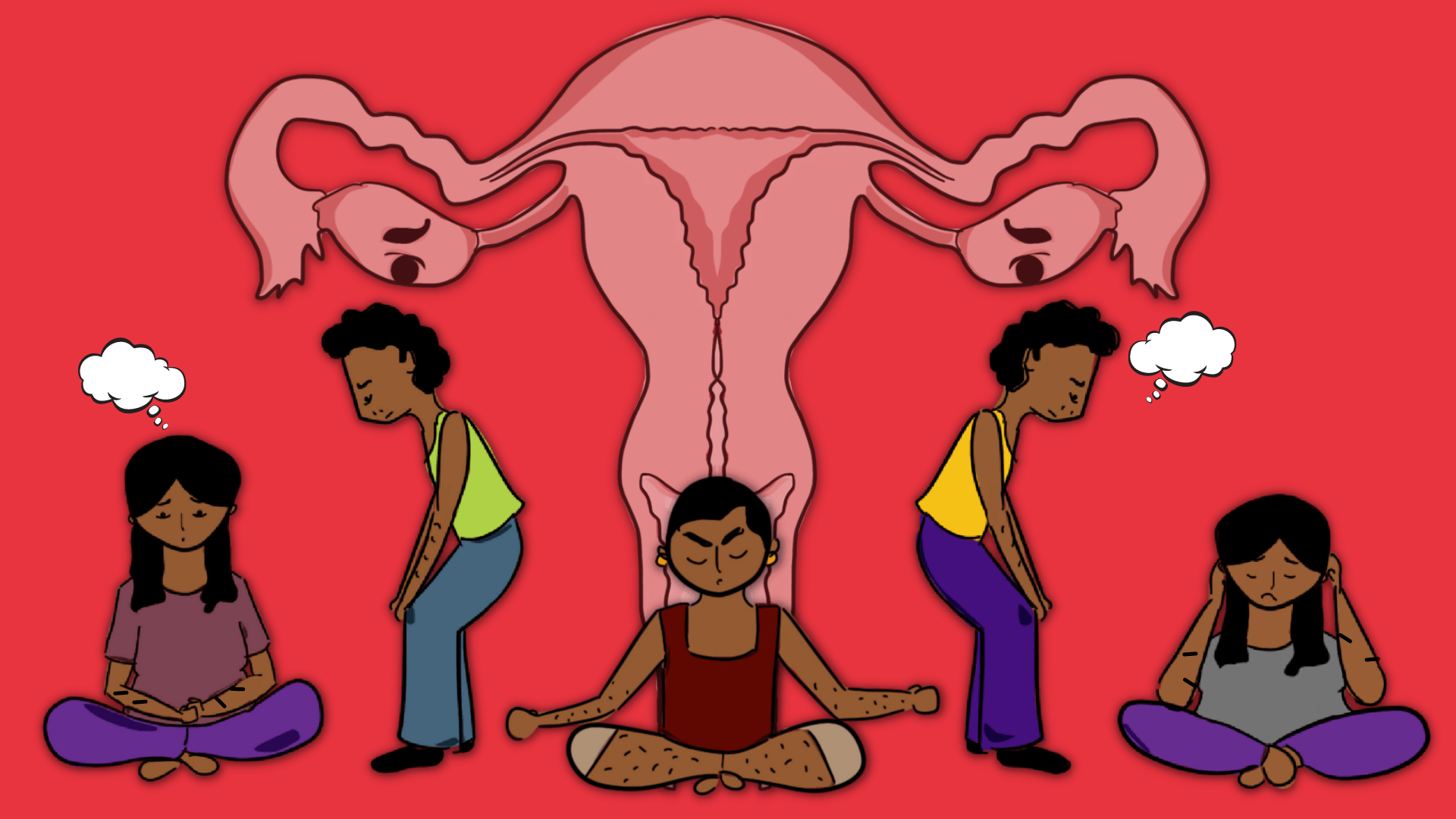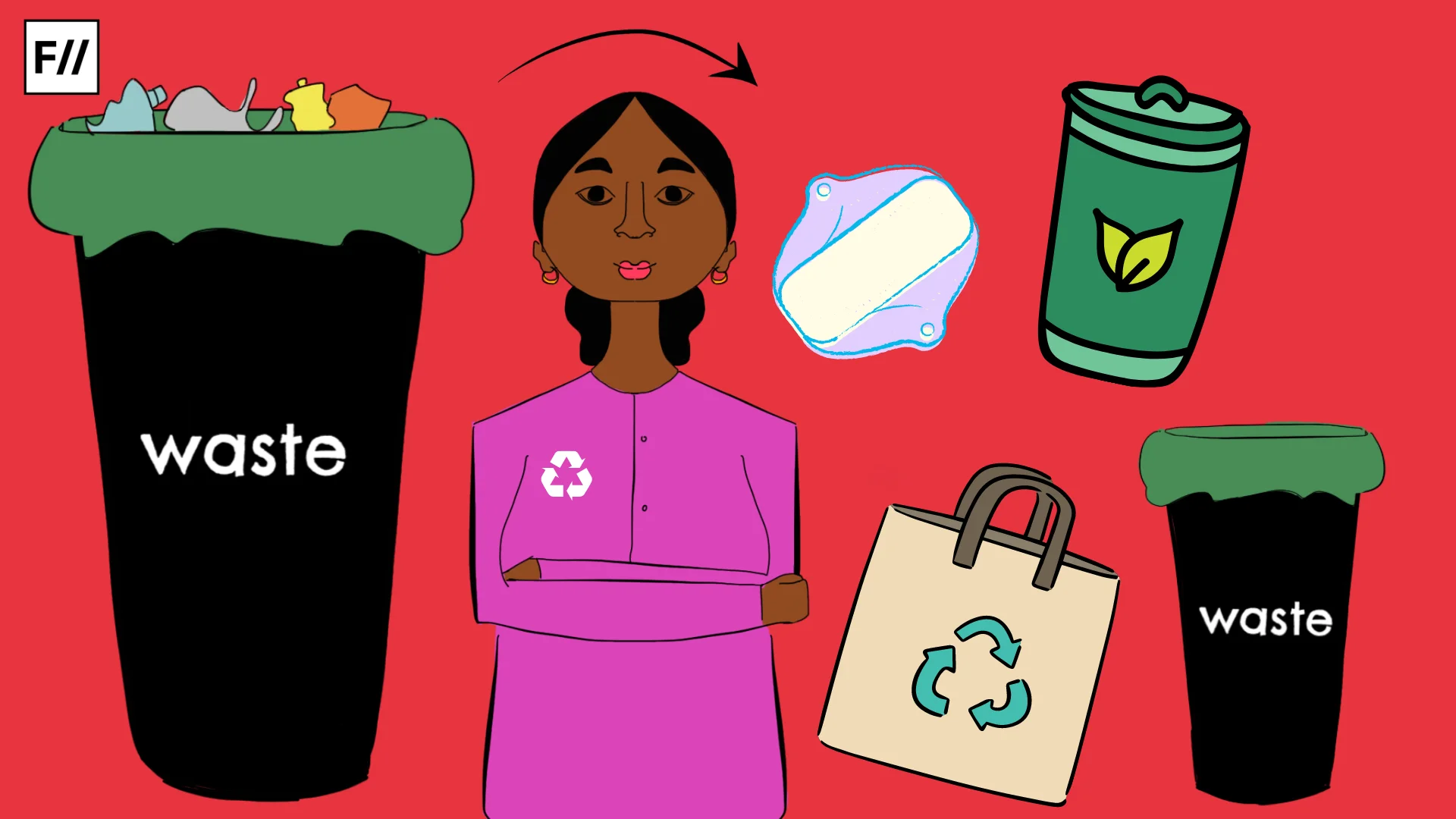In recent years, there has been a growing recognition of menstrual hygiene as a significant public health concern in India. Despite menstruation being a natural process, many adolescent girls and women face difficulties in practicing adequate Menstrual Health and Hygiene Management (MHHM). A study conducted to assess the status of Menstrual Hygiene Management in India, revealed that a quarter of adolescent girls did not attend school during menstruation. According to the latest National Family Health Survey conducted in 2019-21, over 30% of menstruators aged 15 to 24 years do not use hygienic methods to manage their periods. While there have been significant strides in menstrual hygiene policies in India, challenges such as cultural taboos, inadequate infrastructure, and affordability barriers still persist.
While there have been significant strides in menstrual hygiene policies in India, challenges such as cultural taboos, inadequate infrastructure, and affordability barriers still persist.
UNICEF highlights that these challenges deny them the right to handle their menstrual cycles in a dignified and healthy way. Inadequate MHHM adversely affects their health, education, nutrition, safety, and hygiene, thereby positioning MHHM as a human rights issue. This acknowledgment has led to increased focus by Central and State Governments on addressing the challenges faced by women and girls in managing their menstruation in a hygienic and dignified manner.
Evolution of menstrual hygiene management advocacy in India
The Reproductive and Child Health (RCH) Program, initiated in 1997 by the Central Government, aimed to reduce mortality rates among infants, children, and mothers but did not address concerns related to menstrual and mental health. The National Health Mission (NHM), launched in 2005, targeted a wider range of health issues. While it did not specifically focus on menstrual hygiene, it included initiatives to raise awareness about menstrual hygiene among rural girls aged 10 to 19.

The Delhi Declaration in 2008 marked a national commitment to prioritise menstrual hygiene, followed by the Menstrual Hygiene Scheme in 2011, which focussed on the distribution of low-cost sanitary napkins in communities through ASHAs. The Rashtriya Kishor Swasthya Karyakram (RKSK) in 2014, aimed to provide subsidised sanitary napkins to adolescent girls in rural areas through schools and Anganwadi centers.
A significant turning point in menstrual hygiene management (MHM) advocacy in India was the launch of the Swachh Bharat Abhiyaan in 2014, which focused on constructing sanitary facilities for proper disposal of menstrual waste. The National Guidelines on Menstrual Hygiene Management in 2015 provided a comprehensive framework to promote menstrual hygiene among schoolgirls and a blueprint for states to enhance their efforts.
Moreover, some organisations have introduced menstrual leave policies to support menstrual health in the workplace and promote inclusivity. In April 2023, the Supreme Court of India advocated for a “Uniform National Policy” to ensure the availability of free sanitary pads for all girls in classes 6 to 12, along with the provision of separate toilets for menstruators in all schools.
Several state governments have implemented distribution programs that provide free or subsidised sanitary napkins to school girls and women from marginalised communities.
Several state governments have implemented distribution programs that provide free or subsidised sanitary napkins to school girls and women from marginalised communities. Examples include the ‘Sanitary Napkins for School Going Girls’ program in Jharkhand, ‘Asmita Yojana’ in Maharashtra, ‘Suchi Yojana’ in Karnataka, and the ‘She Pad’ program in Kerala, alongside awareness campaigns. Recently, there is also a growing focus on promoting sustainable menstrual products to reduce environmental impact and improving long-term affordability. In line with these efforts, the Government of India has introduced the Jan Aushadhi Suvidha Sanitary Napkin Scheme under the Pradhan Mantri Bharatiya Jan Aushadhi Pariyojana (PMBJP) to provide affordable and eco-friendly sanitary napkins.
The Jan Aushadhi Suvidha Sanitary Napkin scheme
Launched in 2018, the sanitary napkins distributed through this scheme are environment-friendly as compared to other commercial sanitary napkins, which are non-biodegradable and hazardous to the environment. The Suvidha sanitary napkin has a special additive that, when discarded, reacts with oxygen and becomes biodegradable. The scheme was launched for underprivileged women and the pads are made available for sale at Re. 1/- in more than 10607 PMBJP Kendras across the country.

As per the official PMBJP website, the cumulative sales of Suvidha Napkins as on 31.01.2024 is 50.41 crores. This initiative is commendable as it aims to make sanitary napkins accessible and affordable for women who still use unhygienic aids due to the unaffordability of popular sanitary napkin brands.
Evaluating the Jan Aushadhi Suvidha Sanitary Napkin scheme: current status and strategies for success
A study conducted by the first author revealed a general lack of awareness among women regarding eco-friendly menstrual hygiene products and their benefits for health and environmental sustainability. While some knew about the Suvidha scheme, many were unaware of its benefits. Word-of-mouth, particularly from Pradhan Mantri Bhartiya Jan Aushadhi Kendra (PMBJK) managers and other women, was the primary source of information, with no advertisement exposure. Comprehensive awareness campaigns through various media platforms, including television, radio, social media, and community outreach programs can improve the visibility of the product. These campaigns should emphasise the benefits of Suvidha and eco-friendly menstrual hygiene products.
Despite the biodegradability of the pads, women often used polythene bags for disposal, negating environmental benefits intended by the scheme. This makes it is necessary to provide eco-friendly disposal solutions, such as biodegradable disposal bags, and educate women on their use to complement the biodegradable nature of the sanitary napkins.
Many users appreciated lower cost of Suvidha pads compared to commercial pads, for its affordability, especially for women from economically disadvantaged backgrounds. However, issues like poor adhesive quality, small size, thinness, quick wetness, and limited absorption caused discomfort and leakage, particularly for working women with heavier flow. The dissatisfaction with product quality led to women discontinuing Suvidha pads regularly, with a preference for commercial pads. To address these concerns, the scheme should enhance product quality by implementing stringent quality control during manufacturing process. Consistent feedback mechanisms are also crucial for continuous improvement, ensuring the product meets diverse menstrual hygiene needs.

Supply chain challenges, including frequent stock shortages, made accessing Suvidha pads difficult for women. This unavailability forced many to use expensive alternatives or revert to cloth, causing discomfort, health issues, and financial strain. Women eligible for the scheme but still not using the pads, mentioned a lack of awareness as the reason. Accessibility issues, such as the distance of PMBJKs from their homes and commuting costs, hindered the usage of these pads.
Accessibility issues, such as the distance of PMBJKs from their homes and commuting costs, hindered the usage of these pads.
Family restrictions also influenced women’s decisions regarding the use of sanitary pads. One of the women said, ‘It has been three years to my marriage and I don’t have a child yet, so my mother-in-law doesn’t let me use sanitary pads. It is said that other people should not see menstrual blood as it can cause difficulty in conceiving. So, she made me switch to cloth.’ Such beliefs surrounding menstruation and conception, associated with the visibility of menstrual blood and the notion that discarding used pads can lead to adverse consequences and deter women from adopting Suvidha pads. These taboos can be addressed through community-based interventions and involving local leaders to conduct open discussions.
According to the study, the PMBJK managers encountered erratic supply chains and logistics issues, such as delays in delivery, inadequate stock, and high transportation charges. These challenges sometimes forced them to sell expensive commercial pads when Suvidha stock was unavailable. For any program to be effective, it must reach its target population, be accessible when required, and undergo continuous monitoring and evaluation to identify areas for improvement. To address supply chain issues, leveraging technology for real-time tracking and demand forecasting can ensure consistent stock levels. Local manufacturing units or decentralised distribution hubs can reduce transportation costs and delays. Public-private partnerships can utilise diverse resources and expertise for better distribution.
Menstrual hygiene management (MHM) is intricately linked to several Sustainable Development Goals (SDGs), primarily Goal 3: Good Health and Well-being, and Goal 5: Gender Equality. Lack of WASH facilities and support during menstruation can cause girls to miss school, affecting education (Goal 4), and disrupt work, impacting economic opportunities (Goal 8). Achieving gender equality (Goal 5) is hindered by taboos and myths that limit the participation of menstruating women and girls. Additionally, inadequate markets for quality menstrual materials affect sustainable consumption and production patterns (Goal 12).

Period poverty is not just the absence of menstrual products; it also includes absence of education about menstruation and insufficient access to water, sanitation, and hygiene facilities. While the introduction of the Suvidha Scheme is a step in the right direction, it is crucial to recognise that addressing menstrual hygiene challenges go beyond just this provision. A comprehensive approach is needed to address the challenges that hinder the attainment of SDGs.
Chinmayee Bhute is pursuing a Master of Public Health in Health Policy, Economics and Finance at the School of Health Systems Studies, Tata Institute of Social Sciences, Mumbai.
M. Sivakami is a professor at the Tata Institute of Social Sciences, Mumbai.
About the author(s)
Chinmayee Bhute is pursuing a Master of Public Health in Health Policy, Economics and Finance at the School of Health Systems Studies, Tata Institute of Social Sciences, Mumbai.




